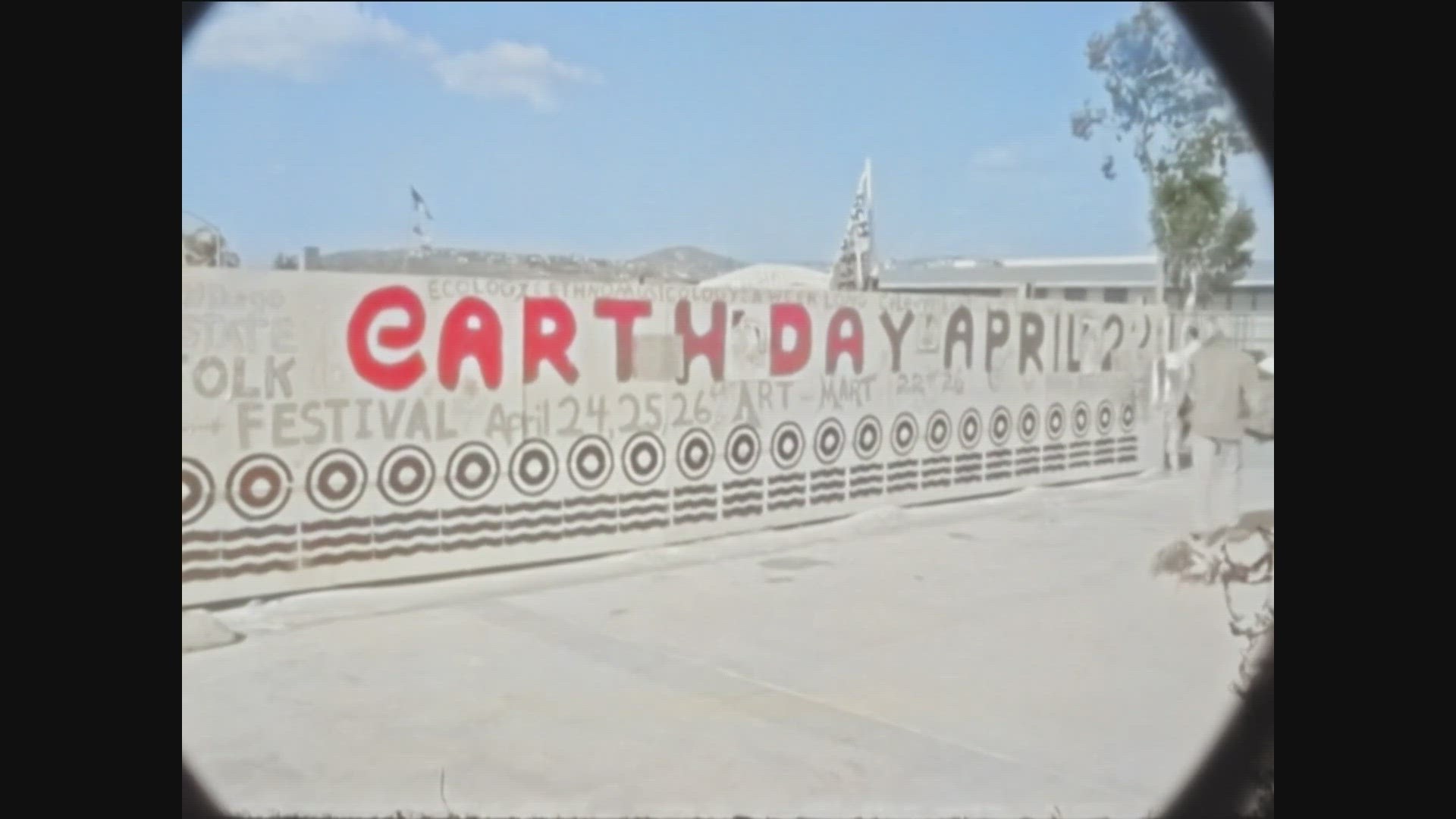SAN DIEGO — Taking care of our planet continues to be more important now than ever.
With Earth Day coming up this Monday, CBS 8 wanted to take a look back at the history, now spanning more than 50 years.
From the mountains, desert and coast, planet Earth is a wonder and since 1970, there's been great interest in taking better care of our home.
This environmental movement was started by a Junior Senator from Wisconsin, Gaylord Nelson, who was inspired by a massive oil spill in Santa Barbara.
Also after we started pumping out plastic in the 1950's – we learned about the environmental and health affects coming from a spike in the use of those chemicals. So the Senator recruited a young activist, Denis Hayes - who remains on the board today, to talk about air and water pollution on college campuses.
"It was their willingness to travel around. People do care about the environment, no one wants to see it fall apart, but they needed someone to be a leader, in the civil sector and within the government, saying we have to do more so that it doesn't just catch on fire. It sparked a whole movement, that's still going on today and we're glad to see it," Aidan Charron said, from EarthDay.org.
Groups that had been fighting individually against things like power plants and pesticides united on Earth Day. It started as a bi-partisan issue and within the first year, led to the creation of the Environmental Protection Agency, Occupational Safety and Health Act and the Clean Air Act. You can still encourage legislation today.
"Reaching out to your local Congress person, saying hey, I care about the environment. What steps can I do? And what can you do, to improve my local environment?" Charron suggested.
The care and concern for our planet only increased and led to more action in 1980 - with things like the Endangered Species Act and Toxic Substances Control Act. It is often our marine life who bears the brunt.
"Plastic doesn't truly break down, ever. Even though you can't see it with your naked eye, it's still there. When you look into our marine systems, it's just piling up on our ocean floors," Charron added. "You're inhaling it in the air, drinking it in your water and eating it in your food."
Another decade later, 1990 brought a big boost to recycling efforts worldwide, but we've learned it's not doing enough.
"Plastic recycling is a failure, 5% of the plastic in the U.S. is recycled. 9% globally, so that's terrible," Charron said.
EarthDay.org says the large corporations mostly responsible for making single use plastic need to be held accountable and revert to using materials like glass.
"The pressure is going to come from legislation, saying you need to be responsible for clean-ups. The clean-up costs are huge, but the cost on our healthcare system is equivalent to $250 billion dollars, in the U.S. alone, each year." Charron said.
From the year 2000 to now, billions of people have taken action around the world and are currently focused on global warming and pushing for clean energy. From conserving water to using reuseable bags and bottles, you can also participate in a clean-up or plant a tree.
"Planting a tree is hugely beneficial. They absorb carbon better than anything we've come up with," Charron said.
A Global Treaty surrounding plastic is also in the works.
WATCH RELATED: Earth Week 2024 | San Diego organizations host Creek to Bay cleanup

